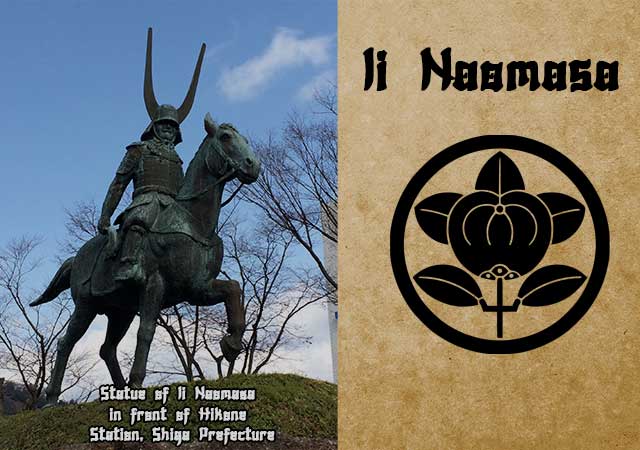
Ii Naomasa, recognized as one of the Four Guardians of the Tokugawa clan alongside generals Honda Tadakatsu, Sakakibara Yasumasa, and Sakai Tadatsugu, hailed from Hoda Village in Totomi Province (present-day western Shizuoka Prefecture). His family had long served Imagawa Yoshimoto until Yoshimoto's demise at the Battle of Okehazama.
Born to Ii Naochika, Naomasa faced familial upheaval when his father was unjustly accused of treason, leading to his exile and subsequent execution by Yoshimoto's son, Ujizane, in January of 1563. At the tender age of three, Naomasa, orphaned by this tragedy, was taken in by the Tokugawa family. Following the death of his stepmother, Naotora, in September of 1582, he assumed leadership of the Ii clan.
Commencing his service to the Tokugawa in the mid-1570s, Naomasa earned Tokugawa Ieyasu's high regard and was rewarded with a fief in Omi (Shiga Prefecture). Notably, at the Battle of Nagakute in 1584, he commanded 3,000 matchlock gunners and secured victory against Ikeda Tsuneoki's forces, earning commendation from the opposing leader, Toyotomi Hideyoshi. After this battle, Hideyoshi's mother was placed under Naomasa's care as a hostage to solidify the Toyotomi-Tokugawa alliance.
During the 1590 siege of Odawara, Naomasa played a pivotal role in breaching the castle walls, leading to the surrender of the Hojo clan. His efforts earned him Minowa Castle in Takasaki, Gunma, making him the largest landholder among Tokugawa retainers.
In 1600, at the Battle of Sekigahara, Naomasa and his son-in-law, Matsudaira Tadayoshi, initiated a daring attack on the Western allied Ukita troops, despite not being the first into battle as initially designated. Although surviving the intense seven-hour conflict, Naomasa sustained severe injuries in the final moments while pursuing the escaping Shimazu clan. Despite personal care from Ieyasu, the wounds from Sekigahara are believed to have contributed to Naomasa's premature death two years later.
In recognition of his valor, Naomasa was granted lands in modern-day Hikone. Disliking Ishida Mitsunari, the former owner of the area, to such an extent that he refused to live in his shadow, Naomasa had Ishida's castle on Sawayama demolished and significant topsoil removed from the mountain. Intent on establishing a new castle on Mt Hikone, he began construction but passed away before its completion.
See also
-
Hattori Hanzo
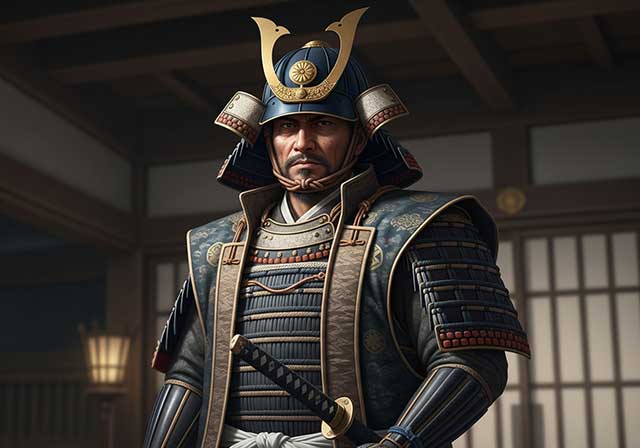
Hattori Hanzō, also known by the name Hattori Masanari, was the third son of Hattori Yasunaga, a samurai who served the Matsudaira clan. In his childhood he was called Tigachi Hanzō. His father held the highest rank in the shinobi hierarchy, that of jōnin, and Hanzō followed in his father’s footsteps, choosing the same path.
-
Hatano Hideharu
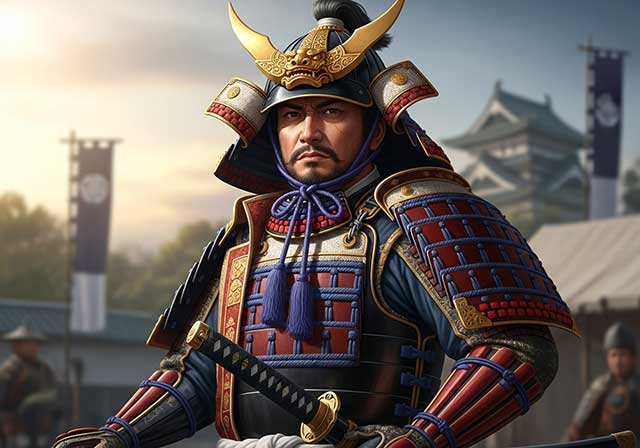
Hatano Hideharu was the eldest son of Hatano Harumichi, the head of the Hatano clan. However, in childhood he was adopted by his uncle, Hatano Motohide, and was therefore formally regarded as Motohide’s heir. From the time of Hideharu’s grandfather, Hatano Tanemichi, the Hatano clan had been a vassal of the powerful Miyoshi house, which exerted considerable influence over the Ashikaga shoguns and effectively shaped the political situation in the region. Early in his career, Hideharu served Miyoshi Nagayoshi and, judging by surviving records, held a fairly high position within his lord’s hierarchy, as he was among the select group invited to the enthronement ceremony of Emperor Ōgimachi in 1557.
-
Fukushima Masanori
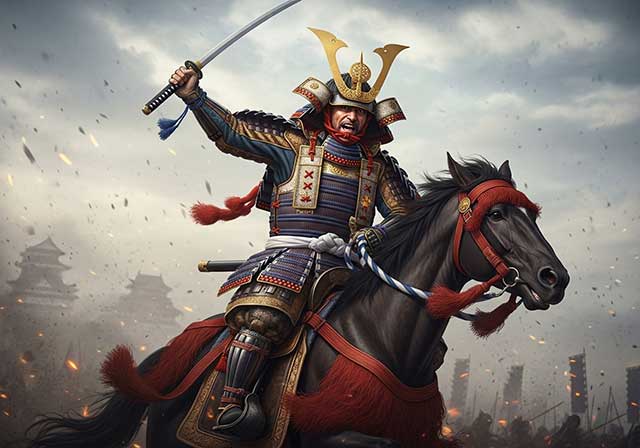
Fukushima Masanori, a samurai from Owari Province, served Toyotomi Hideyoshi and took part in the Battle of Shizugatake, where he distinguished himself so conspicuously that he was awarded the honorary title of one of the “Seven Spears of Shizugatake,” meaning the warriors who had shown the greatest valor in the battle. As a reward for his courage and martial prowess, he was granted land producing an income of 5,000 koku of rice.
-
Uemura Masakatsu
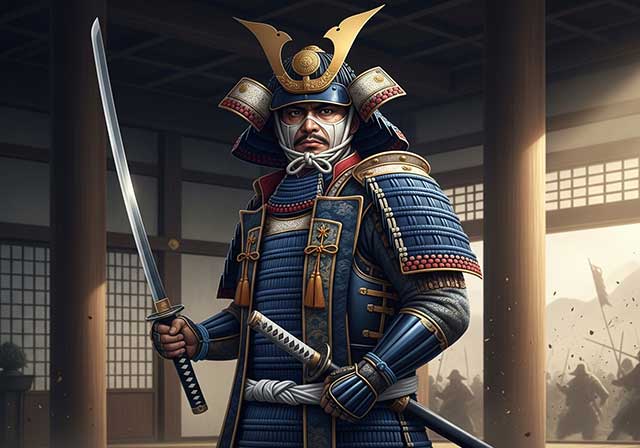
Masakatsu was a member of the Uemura clan and the son of Uemura Masatada; from an early age he served Tokugawa Ieyasu. During the Ikkō-ikki uprising in Mikawa Province in 1563, having converted from the Jōdo Shinshū Buddhist sect to the Jōdoshū sect, he took part in suppressing the rebels. After these events, Masakatsu was appointed a military governor and was granted land holdings. According to a number of sources, he was one of the so-called “Three Governors of Mikawa” (Mikawa sanbugyō), together with Amano Yasukage (1537–1613) and Koriki Kiyonaga (1530–1608).
-
Tomoe Gozen

Gozen is regarded as one of the few historically documented examples of true female warriors of feudal Japan, known as onna-musha or onna-bugeisha. Although Japanese history records countless women who at various times were forced to take up arms—for example, in defense of their castles—Tomoe Gozen was, without any doubt, a genuinely skilled and accomplished fighter. She was the wife of Kiso (Minamoto) Yoshinaka, although The Tale of the Heike describes her more as a female vassal. Yoshinaka rose in rebellion against the Taira clan and, in 1184, captured Kyoto after his victory at the Battle of Kurikawa. After the Taira were driven into the western provinces, Yoshinaka began insistently asserting that he alone was worthy of assuming leadership of the Minamoto clan and taking on the mantle of its head.
-
Tachibana Muneshige

Tachibana Muneshige was born the eldest son of Takahashi Shigetane, one of the principal retainers of the Ōtomo clan and commander of Iwaya Castle. In childhood, he bore the name Senkumamaru. His early years coincided with a period of intense military confrontation between the Ōtomo clan and other powerful warrior houses of Kyūshū—namely the Shimazu, Akizuki, and Ryūzōji clans.
-
Tachibana Dosetsu
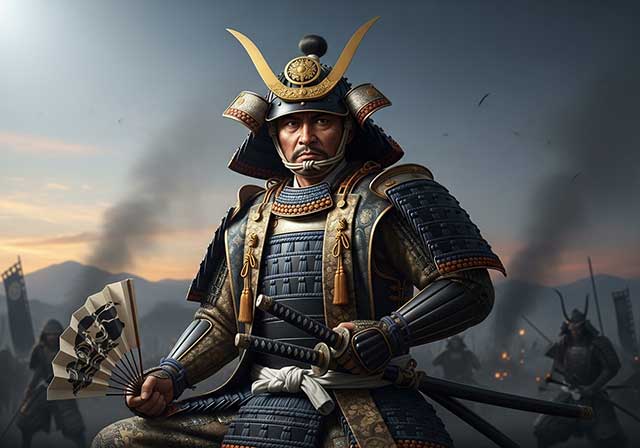
Tachibana Dōsetsu is the name by which Hetsugi Akitsura is more widely known; the name of this lineage is also found read as Hekki or Bekki. For a long period, Akitsura served the Ōtomo clan, the daimyō of Bungo Province, and took part in wars against the Ōuchi family, the principal enemies of the Ōtomo in northwestern Kyushu. In the 1560s, Akitsura seized the castle of the Tachibana clan, which had rebelled against the Ōtomo, and thereafter adopted the surname Tachibana. Around the same time, he took Buddhist vows and assumed the name Dōsetsu, which means “Snowy Road.”
-
Taira no Masakado
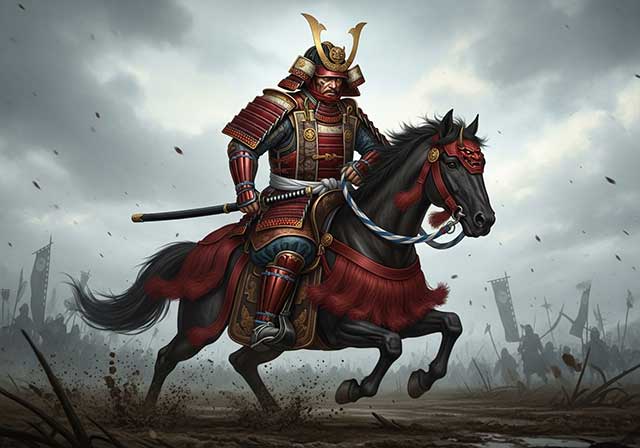
Taira no Masakado embodied the quintessential samurai of his era—self-assured, harsh, and unyielding. In his youth, he served in the palace guard and repeatedly proved his bravery while suppressing unrest. Thanks to these achievements, Masakado sought the post of chief of the capital’s military-police office (the kebiishi-chō), but he was rejected: by that time, nearly all court positions—now little more than privileged sinecures—were controlled by members of the powerful Fujiwara clan.

